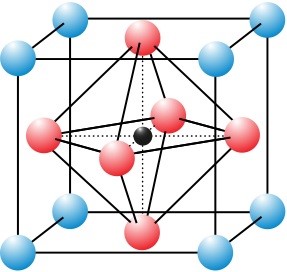I was watching an OCW by MIT (3.091X) on solid state. My previous notion of lattice point and unit cell got shattered after this example.
Where are the unit cell and lattice points in this picture?
Unit Cell is the smallest group of atoms which has the overall symmetry of a crystal, and from which the entire lattice can be built up by repetition in three dimensions.
Lattice is the arrangement of points in space such that any point us identical to any other.
So using these definitions, the answer is
Green is the unit cell, and red ones are the lattice points.
Previously I used to think that a molecule should be symmetrically placed in a unit cell such that its center of mass lies on the lattice point. But in this example, the center of mass (shown by the yellow-green circle) is way off the lattice point.
My question is, Are there any other similar examples where the center of mass of molecule doesn't coincide with the lattice point or at least doesn't placed symmetrically in a unit cell (like on the face center, body center)?




